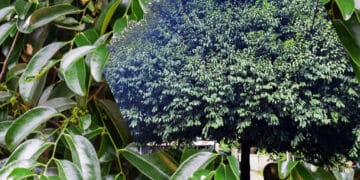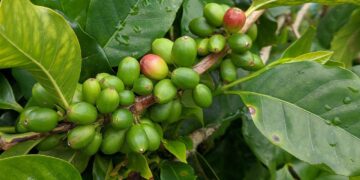It is a long-standing custom to worship certain trees and vines, claiming that they possess supernatural power. This custom is still practised in some parts of the world, including in the tropics. For example, in India and Sri Lanka, various flora and fauna are considered sacred and worshipped and religious rites are performed.
Mr MF Macmillan, formerly the Trustee of the Peradeniya Botanic Gardens, commented on the subject: “Trees considered sacred are not always used in practice. On the one hand, the higher the sanctity, the harder it is for a tree to be physically useful, and the saints are not allowed to harm it in part. ”
For example, Mr Macmillan mentions the Bodhi tree, which is considered the most sacred tree in India and Sri Lanka and is equally revered by Hindus and Buddhists alike. “A non-Buddhist must be found to deal appropriately with a dangerous Bo tree, or a Bo tree that has accidentally sprouted from a building or bridge. A devout Buddhist will never consciously harm a small plant. ”

Meanwhile, the Buddhists in this country are inclined to respect the Nuga and Ruk trees as the abodes of the gods. It is a common custom to plant Na, Sepalika and Aralia trees near temples where flowers are commonly available for offerings.
Sal tree is a species of tree that can be seen in temples and shrines. Although it is not usually a beautiful tree, the Sal tree looks attractive at the time of flowering. The 4-6 feet tall pink mixed white flowers add a new light to the Ransal tree. The Kela tree, popularly known as the “Wildfire of the Forest” by the Europeans, is a tree revered by the Brahmins. Endemic to the forests of India, Sri Lanka and Burma. The dark red or orange flowers are especially found here to prove the Bara-hara.
The Sami Tree and the Padri tree are two species of trees that are considered by Hindus all over India. The Kohomba tree is also revered by Hindus. Known by the villagers of Sri Lanka as Thala or “Mosquito Thala”, the plant is revered by Hindus and is cultivated in almost every household in India.
There are trees that are revered by some indigenous peoples on the continent of Africa as places where their ancestors took their souls. Among them is the Sausage Tree, a fruit tree with twigs and hanging dandelions.
Indigenous to the forests of the arid zone (Eastern Province) of Sri Lanka, Kenawila or a beautiful flowering tree known as ‘Malai Paruttu’ in the Tamil language is revered by the Vedic people. The Pale yellow flowers of a tree belonging to the bamboo family known as the “Nandin” (Sacred Bamboo) in popular China and Japan are then used to offer red fruits to temples.








